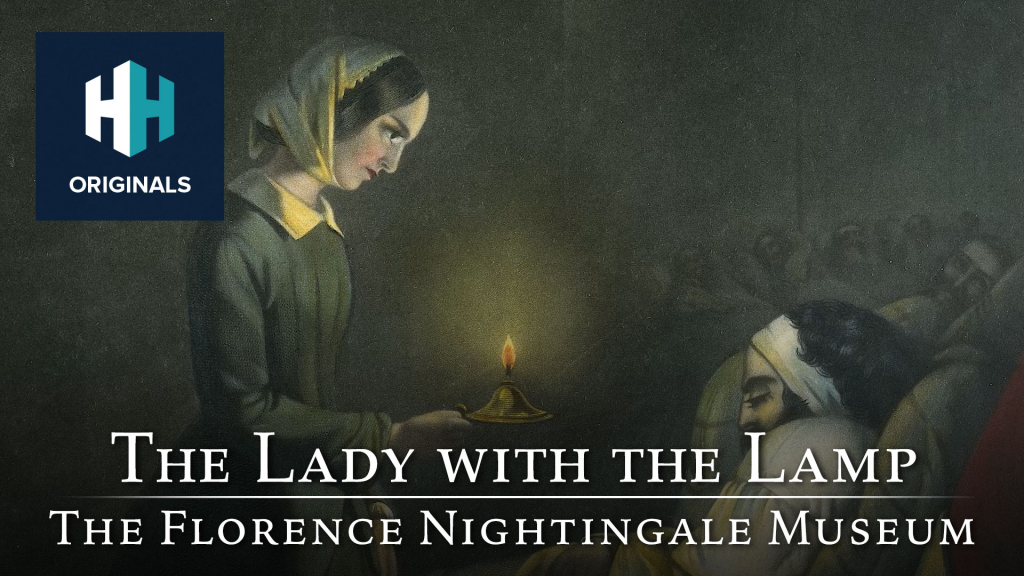
The 63 year-long reign of Queen Victoria saw the rise of the British Empire, the growth of industry, political developments, scientific discovery and more. During this period, Victoria and her husband, Prince Albert, also had 9 children: 5 daughters (Victoria, Alice, Helena, Louise and Beatrice) and 4 sons (Albert, Alfred, Arthur and Leopold).
From these children they had an impressive 42 grandchildren and 87 great-grandchildren, who would form the royal families of Britain, Russia, Romania, Yugoslavia, Greece, Denmark, Norway, Sweden, Spain and what is now Germany. It is therefore no surprise that Queen Victoria is often referred to as the ‘Grandmother of Europe’.
Not only determining the royal rulers of Britain, Queen Victoria and her children began a dynasty that would, as part of the ruling classes, shape the future of Europe for decades to come.
 Watch Now
Watch Now
Cousins at war
Born in 1840, the Princess Royal Victoria or ‘Vicky’ was the eldest child of Queen Victoria and Prince Albert. Aged 17, she married Emperor Frederick of Prussia and together they had 8 children. Their eldest son was Wilhelm II who assumed the throne at a young age when his father died in 1888. Wilhelm was also the last German Emperor (or Kaiser), and abdicated in 1918.
Wilhelm was more politically conservative than his parents; Victoria had been ostracised in the German court for her liberal views favouring constitutional monarchy, modelled by her mother in Britain.
Almost 8,000 letters between Victoria and her mother survive, detailing life inside the Prussian court between 1858 and 1900, the period that saw her son Wilhelm sack the Chancellor Otto von Bismarck and show growing hostility to foreign powers.

A photograph of the rulers of Europe at Windsor for King Edward VI’s funeral in 1910. King George V sits in the centre with his cousin, Kaiser Wilhelm II, behind him.
Image Credit: W. & D. Downey / Public Domain
The Prince of Wales, Albert or ‘Bertie’ was Queen Victoria’s first son, born in 1841. Bertie became King Edward VII – after which the ‘Edwardian period’ was named – when Queen Victoria died in January 1901. Before then he had gained a reputation as a playboy prince, souring his relationship with the Queen.
Because his mother’s reign lasted so long, Bertie was only king for 9 years, dying from cancer in 1910. Nevertheless, his short reign is noted for significant scientific and political developments, including the proliferation of steam power and growth of socialism.
Bertie was also father of future king George V, who would go to war with his cousin Wilhelm II in 1914. George changed the name of the British royal family during World War One from Saxe-Coburg to Windsor because of the royals’ unsavoury German heritage.
Princess Alice
Born in 1843, Princess Alice was the third child of Victoria and Albert, and nursed her father when he became ill with typhoid. Alice became passionate about nursing and spoke openly about gynaecological medicine, much to the horror of her family.
Alice married the Duke of Hesse (a minor German duchy) and, while in an unhappy marriage, this relationship gave birth to some of Europe’s most notable royals. These included her daughter Alix, who married Tsar Nicholas II and became the last Empress of Russia, Alexandra Feodorovna Romanova.

Photograph of the Hessian Family in 1876, including Princess Alice and her daughter, Alix, looking uncertain in the centre.
Image Credit: Royal Collection / Public Domain
Her grandson was Louis Mountbatten, the last Viceroy of India, and her great-grandson, Prince Philip, the Duke of Edinburgh, was her granddaughter Princess Alice of Battenburg’s son. Philip would marry Queen Elizabeth II, granddaughter of Edward VII (Bertie) and his third cousin.
Alice was the first child Queen Victoria survived. She died from diphtheria on 15 December 1878, just a day after the anniversary of her father Albert’s death.
Dutiful sons and daughters
The Princesses Helena and Louise dedicated themselves to their royal duties and remained close with their mother. Even after her marriage to the impoverished Prince Christian of Schleswig-Holstein, Helena lived in Britain where she could act as Victoria’s unofficial secretary.
Helena was the most active of Victoria’s children in fulfilling her role and supporting charity; the princess presided over debutant balls, was a founding member of the Red Cross and president of the Royal British Nurses’ Association – even clashing with Florence Nightingale over the topic of nurse registration.
 Watch Now
Watch Now
Princess Louise was Victoria’s fourth daughter. In public life she supported the arts, higher education and the feminist movement (as did her sister Helena), writing to the notable Victorian feminist and reformer, Josephine Butler.
Louise married her husband, John Campbell, Duke of Argyll, for love, although their marriage would be childless. Queen Victoria allowed the love match as she did not want to lose her daughter to a foreign prince.
Princes Alfred and Arthur, the fourth and seventh children of Queen Victoria respectively, both had a long and distinguished military careers. A naval admiral, Alfred also took his father’s title as Duke of Saxe-Coburg and Gotha and married the sister of Tsar Nicholas II, Grand Duchess Maria, with whom he had 5 children.
Arthur was Queen Victoria’s last surviving son, travelling the empire during his 40-year army service which included the titles of Governor General of Canada, Duke of Connaught and Strathearn, and Chief of the British Army in Ireland. Arthur gave military advice during World War Two before his death in 1942.
The haemophilia gene
The youngest son of the Queen, Prince Leopold also acted as his mother’s secretary, kept close because of his haemophilia. Haemophilia is a relatively rare hereditary disease that prevents blood from clotting, and more commonly effects male carriers.
Noted for his great intelligence, Leopold studied at Oxford University before marrying Princess Frederica of Waldeck-Pyrmont. Together they had two children, although Leopold died before the birth of his son when he fell and hit his head whilst staying in Cannes in 1884. Nonetheless, through his son Charles Edward, Leopold became the great-great-grandfather of the current king of Sweden, Carl XVI Gustaf.
Leopold’s sister, Princess Alice, also passed on the royals’ haemophilia gene to her daughter Alexandra or ‘Alix’, who in turn passed it to her son, the Tsaravich Alexei. Alexei’s frailty drove the Tsarina to find support and solace in the mystical courtly figure, Rasputin, contributing to her unpopularity in the final years of imperial Russia.
A legacy in letters

A photograph of Princess Beatrice reading to her mother, Queen Victoria, at Windsor Castle in 1895.
Image Credit: Royal Collections / Public Domain
Princess Beatrice was the youngest child of Albert and Victoria. Born just 4 years before her father’s death, Beatrice lived until 1944 (aged 87) surviving all of her siblings, their spouses, as well as her nephew Kaiser Wilhelm II. Beatrice was 17 years younger than her eldest sister, Victoria, and so spent much of her life by the Queen’s side as her secretary and confidant.
As with her other daughters, Queen Victoria was reluctant to let Beatrice marry, but eventually allowed her to wed Henry of Battenberg – on the condition they would live with the ageing Queen. When Henry died of malaria in 1896, Beatrice continued supporting her mother. After the Queen died in 1901, Beatrice spent 30 years transcribing and editing her mother’s legacy from a lifetime’s worth of journals and letters.














